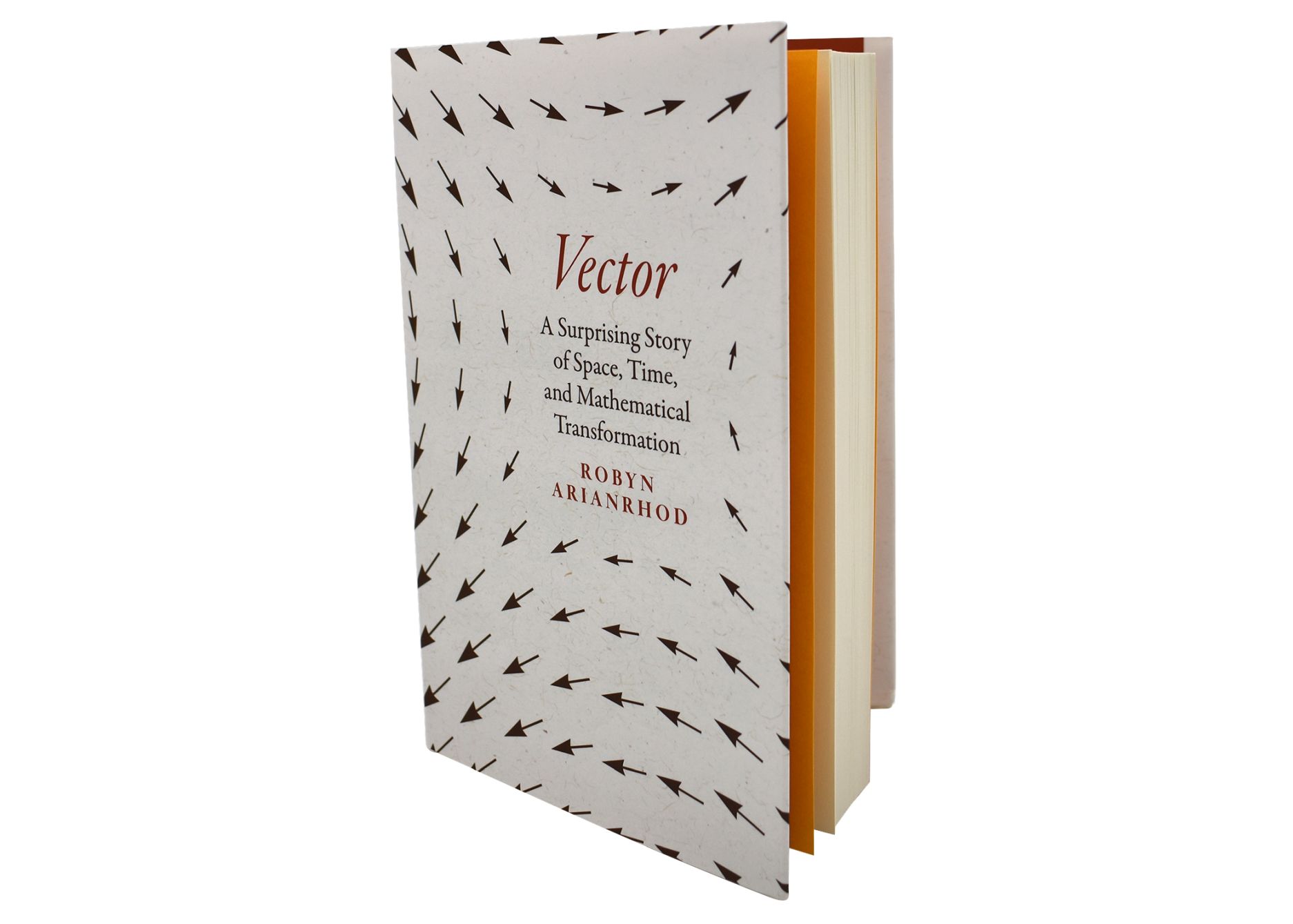Vector
A Surprising Story of Space, Time, and Mathematical Transformation
9780226821108
9780226821115
Vector
A Surprising Story of Space, Time, and Mathematical Transformation
A celebration of the seemingly simple idea that allowed us to imagine the world in new dimensions—sparking both controversy and discovery.
The stars of this book, vectors and tensors, are unlikely celebrities. If you ever took a physics course, the word “vector” might remind you of the mathematics needed to determine forces on an amusement park ride, a turbine, or a projectile. You might also remember that a vector is a quantity that has magnitude and (this is the key) direction. In fact, vectors are examples of tensors, which can represent even more data. It sounds simple enough—and yet, as award-winning science writer Robyn Arianrhod shows in this riveting story, the idea of a single symbol expressing more than one thing at once was millennia in the making. And without that idea, we wouldn’t have such a deep understanding of our world.
Vector and tensor calculus offers an elegant language for expressing the way things behave in space and time, and Arianrhod shows how this enabled physicists and mathematicians to think in a brand-new way. These include James Clerk Maxwell when he ushered in the wireless electromagnetic age; Einstein when he predicted the curving of space-time and the existence of gravitational waves; Paul Dirac, when he created quantum field theory; and Emmy Noether, when she connected mathematical symmetry and the conservation of energy. For it turned out that it’s not just physical quantities and dimensions that vectors and tensors can represent, but other dimensions and other kinds of information, too. This is why physicists and mathematicians can speak of four-dimensional space-time and other higher-dimensional “spaces,” and why you’re likely relying on vectors or tensors whenever you use digital applications such as search engines, GPS, or your mobile phone.
In exploring the evolution of vectors and tensors—and introducing the fascinating people who gave them to us—Arianrhod takes readers on an extraordinary, five-thousand-year journey through the human imagination. She shows the genius required to reimagine the world—and how a clever mathematical construct can dramatically change discovery’s direction.
The stars of this book, vectors and tensors, are unlikely celebrities. If you ever took a physics course, the word “vector” might remind you of the mathematics needed to determine forces on an amusement park ride, a turbine, or a projectile. You might also remember that a vector is a quantity that has magnitude and (this is the key) direction. In fact, vectors are examples of tensors, which can represent even more data. It sounds simple enough—and yet, as award-winning science writer Robyn Arianrhod shows in this riveting story, the idea of a single symbol expressing more than one thing at once was millennia in the making. And without that idea, we wouldn’t have such a deep understanding of our world.
Vector and tensor calculus offers an elegant language for expressing the way things behave in space and time, and Arianrhod shows how this enabled physicists and mathematicians to think in a brand-new way. These include James Clerk Maxwell when he ushered in the wireless electromagnetic age; Einstein when he predicted the curving of space-time and the existence of gravitational waves; Paul Dirac, when he created quantum field theory; and Emmy Noether, when she connected mathematical symmetry and the conservation of energy. For it turned out that it’s not just physical quantities and dimensions that vectors and tensors can represent, but other dimensions and other kinds of information, too. This is why physicists and mathematicians can speak of four-dimensional space-time and other higher-dimensional “spaces,” and why you’re likely relying on vectors or tensors whenever you use digital applications such as search engines, GPS, or your mobile phone.
In exploring the evolution of vectors and tensors—and introducing the fascinating people who gave them to us—Arianrhod takes readers on an extraordinary, five-thousand-year journey through the human imagination. She shows the genius required to reimagine the world—and how a clever mathematical construct can dramatically change discovery’s direction.
376 pages | 13 halftones, 39 line drawings | 5 1/2 x 8 1/2 | © 2024
Reviews
Table of Contents
Prologue
1. The Liberation of Algebra
2. The Arrival of Calculus
3. Ideas for Vectors
4. Understanding Space (and Storage)
5. A Surprising New Player and a Very Slow Reception
6. Tait and Maxwell: Hatching the Electromagnetic Vector Field
7. The Slow Journey from Quaternions to Vectors
8. Vector Analysis at Last—and a “War” over Quaternions
9. From Space to Space-Time: A New Twist for Vectors
10. Curving Spaces and Invariant Distances: On the Way to Tensors
11. Inventing Tensors—and Why They Matter
12. Everything Comes Together: Tensors and the General Theory of Relativity
13. What Happened Next
Epilogue
Timeline
Acknowledgments
Notes
Index
1. The Liberation of Algebra
2. The Arrival of Calculus
3. Ideas for Vectors
4. Understanding Space (and Storage)
5. A Surprising New Player and a Very Slow Reception
6. Tait and Maxwell: Hatching the Electromagnetic Vector Field
7. The Slow Journey from Quaternions to Vectors
8. Vector Analysis at Last—and a “War” over Quaternions
9. From Space to Space-Time: A New Twist for Vectors
10. Curving Spaces and Invariant Distances: On the Way to Tensors
11. Inventing Tensors—and Why They Matter
12. Everything Comes Together: Tensors and the General Theory of Relativity
13. What Happened Next
Epilogue
Timeline
Acknowledgments
Notes
Index



